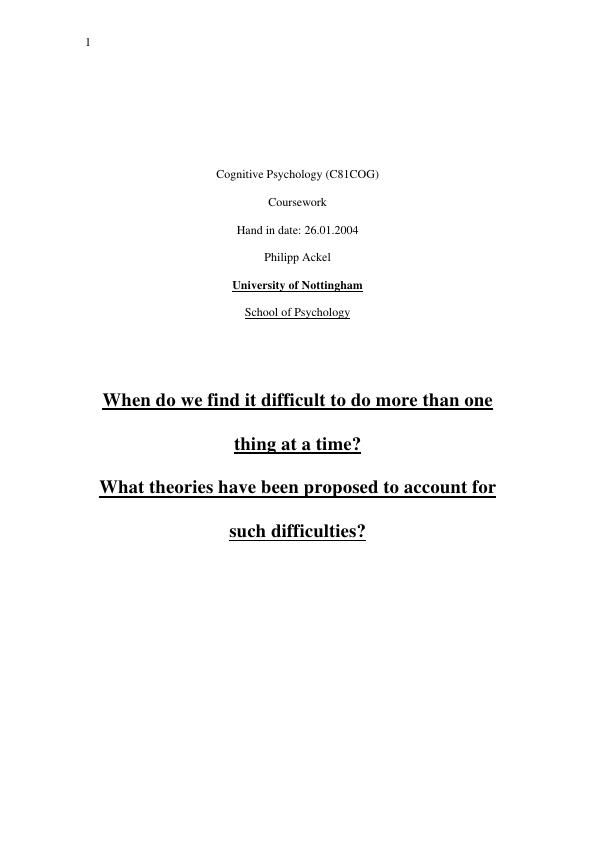In some situations humans can do two things at the same time quite easily, for example writing an essay and listening to an album. In other cases attempting to do two tasks simultaneously will lead to serious disruption of both tasks, for example writing an essay and talking on the phone. Evidence suggests that the amount of disruption experienced when we try to do two things at once depends upon the similarity and difficulty of the tasks, as well as the amount of practise an individual has of them. Theories that attempt to account for such difficulties have to specify the level at which a limitation occurs, i.e. input (perception), output (action), or some intermediate stage of information processing. Relevant theories include Single Channel theories (E.g. Broadbent, 1958), Central Capacity based theories such as Kahnman (1973), Modality Specific theories (E.g. Wickens, 1984), and Baddeley and Hitch’s (1974) Working Memory theory, which involves both a Central Executive and Modality Specific subsystems.
Inhaltsverzeichnis (Table of Contents)
- When do we find it difficult to do more than one thing at a time? What theories have been proposed to account for such difficulties?
- Similarity of tasks
- Difficulty of tasks
- Practice of tasks
- Single Channel Theories
- The Psychological Refractory Period (PRP)
- Central Capacity Theories
Zielsetzung und Themenschwerpunkte (Objectives and Key Themes)
This coursework explores the cognitive processes involved in performing multiple tasks simultaneously, investigating why we find it challenging to do more than one thing at a time. The focus is on identifying the factors that influence dual-task performance and examining the theoretical frameworks that attempt to explain these difficulties.
- Factors influencing dual-task performance: task similarity, task difficulty, and task practice
- Theoretical frameworks: Single Channel Theories, Central Capacity Theories
- The Psychological Refractory Period (PRP)
- Empirical evidence supporting and challenging these theories
- Applications of dual-task research to real-world situations
Zusammenfassung der Kapitel (Chapter Summaries)
- This chapter introduces the concept of dual-task performance and explores the factors that influence our ability to perform multiple tasks simultaneously. It highlights the impact of task similarity, difficulty, and practice on dual-task performance, providing examples from research studies.
- This chapter discusses the Single Channel Theories of attention, proposing that attention operates through a single channel, leading to a bottleneck when processing multiple tasks. The Psychological Refractory Period (PRP) is introduced as evidence supporting this theory.
- This chapter examines the Central Capacity Theories, suggesting that attention is a limited resource that can be allocated to different tasks. It discusses the limitations of Central Capacity Theories and how they address the complexities of dual-task performance.
Schlüsselwörter (Keywords)
The main keywords and focus topics of this coursework include dual-task performance, attention, single channel theories, central capacity theories, psychological refractory period, task similarity, task difficulty, task practice, and empirical evidence.
- Quote paper
- Philipp Ackel (Author), 2004, When do we find it difficult to do more than one thing at a time? What theories have been proposed to account for such difficulties?, Munich, GRIN Verlag, https://www.grin.com/document/78059


